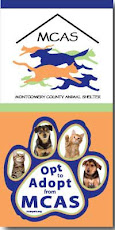
Just home from an all-day seminar held in downtown Houston with Nathan Winograd, the renowned and outspoken voice for “No Kill Shelters.” Eight hours later, my head is aching from the statistics, the step-by-steps, the exhortations, and the swell of strong emotions that come from hanging around the rescue-and-shelter crowd all day long.
Much of what Winograd said—and emphasized, and re-emphasized—is found his book, “Redemption: The Myth of Pet Overpopulation and the No Kill Revolution in America” (2007), but the whirl of numbers and the constant references to the handful of shelter which have actually implemented the Winograd-style no-kill model makes me feel just a bit like I’m getting a hard-sell.
I know I’m supposed to feel empowered, but instead I feel a bit like I do after watching those infomercials for amazing home-gym sets or the Malibu Pilates chair—yes, it could happen, but probably not in my world.
Sure, I agree that “euthanasia” is a euphemism for killing. I avoid the term “killing” around pre-teens, but don’t hesitate to clarify it to those old enough to face the facts. I totally support Trap-Neuter-Release, although our shelter doesn’t formally offer any such program. And I whole-heartedly agree that changing the bureaucratic system requires patience, persistence and more tenacity than it takes to snatch a pig’s ear away from my miniature pinscher.
But emotions and enthusiasm aside, I wonder if the dedicated, hard-working rescue-and-shelter advocates I work with could set aside the rivalries, squabbles and back-stage tensions that hamper the effectiveness of our own volunteer programs and associated 501 c3 groups. The county’s bureaucratic machine tolerates all our efforts, but I’m not sure how seriously they would take us if we approached them with Winograd’s hard line. My feeling is that the County would just pat our collective heads and wait for us to tear ourselves apart from inter-group struggles.
Winograd mentions the problems of egos among those who control the reins of power. Of course, Winograd is no retiring wall-flower. Most rescuer-and-shelter folk (and I include myself in this group)are not immune to the crippling illness of egomania. I try to stay out of the petty dramas, but I have succumbed to temptation in the past.
I need to mull over Winograd’s message, and peruse his book again (I read it when it first came out a couple years ago). Right now, though, I need a break from saving lives. I simply need to cuddle up with my dogs (including my foster) before tomorrow’s off-site adoption event.
What’s your take on Nathan Winograd’s No-Kill Equation? Leave a comment and let me know.



















